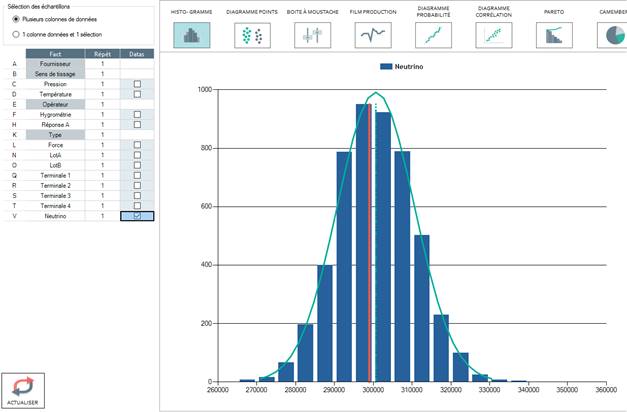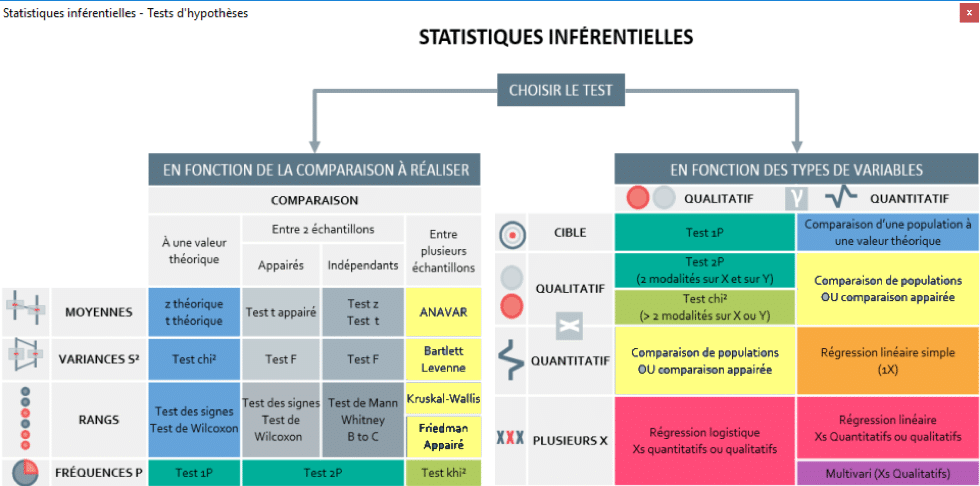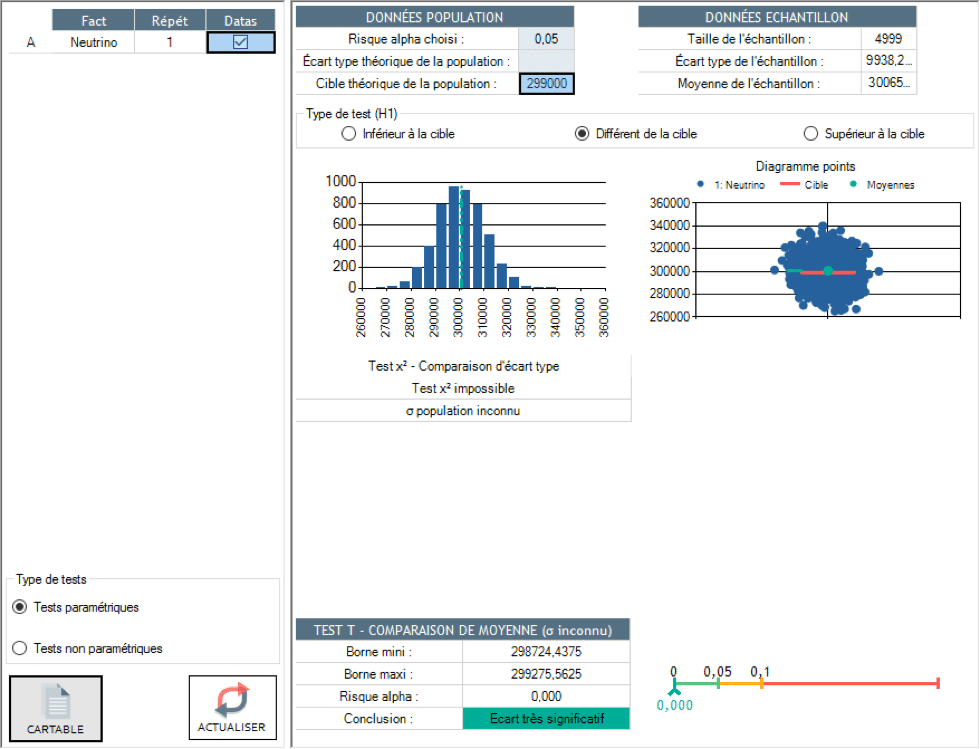User Guide
Example 5: comparing a sample mean with a theoretical value.
You have measured the speed of a large number of neutrinos and your measurement shows that the average is greater than the theoretical average, the speed of light. According to the results of your measurements, can we say that neutrinos move, on average, at a speed significantly greater than the speed of light, which is 299,000 km/s?

Which test do you choose?
Enter the data into Ellistat. Then select the inferential statistics menu (on the left). In the adapted test selection menu (table at the top) select your Y (neutrino speed here)

The inappropriate tests are now greyed out, the only choices left are theoretical value comparison tests. Click on one of the tests to show the results.
Explanation:
Left hand table- Depending on the comparison to be carried out: We want to compare the average of a speed sample with a theoretical value, the speed of light. This is the z theoretical test.
Right hand table - Depending on the types of variables. Y is the result of a speed measurement (quantitative) in relation to a target (X), the speed of light. This is a theoretical value population comparison.

Résult :

Based on the t test that compares the sample average with a theoretical value, we can conclude that the sample average is significantly different than the theoretical value. We can furthermore conclude that neutrinos move at a speed greater than the speed of the light (barring any measurement error...)